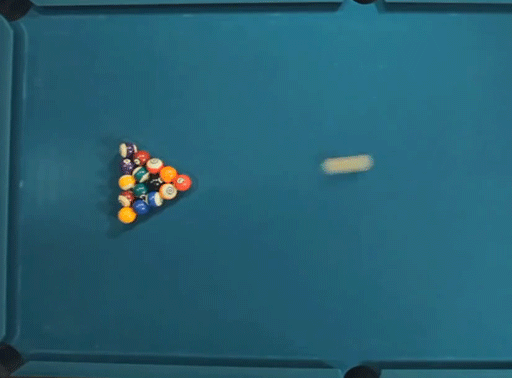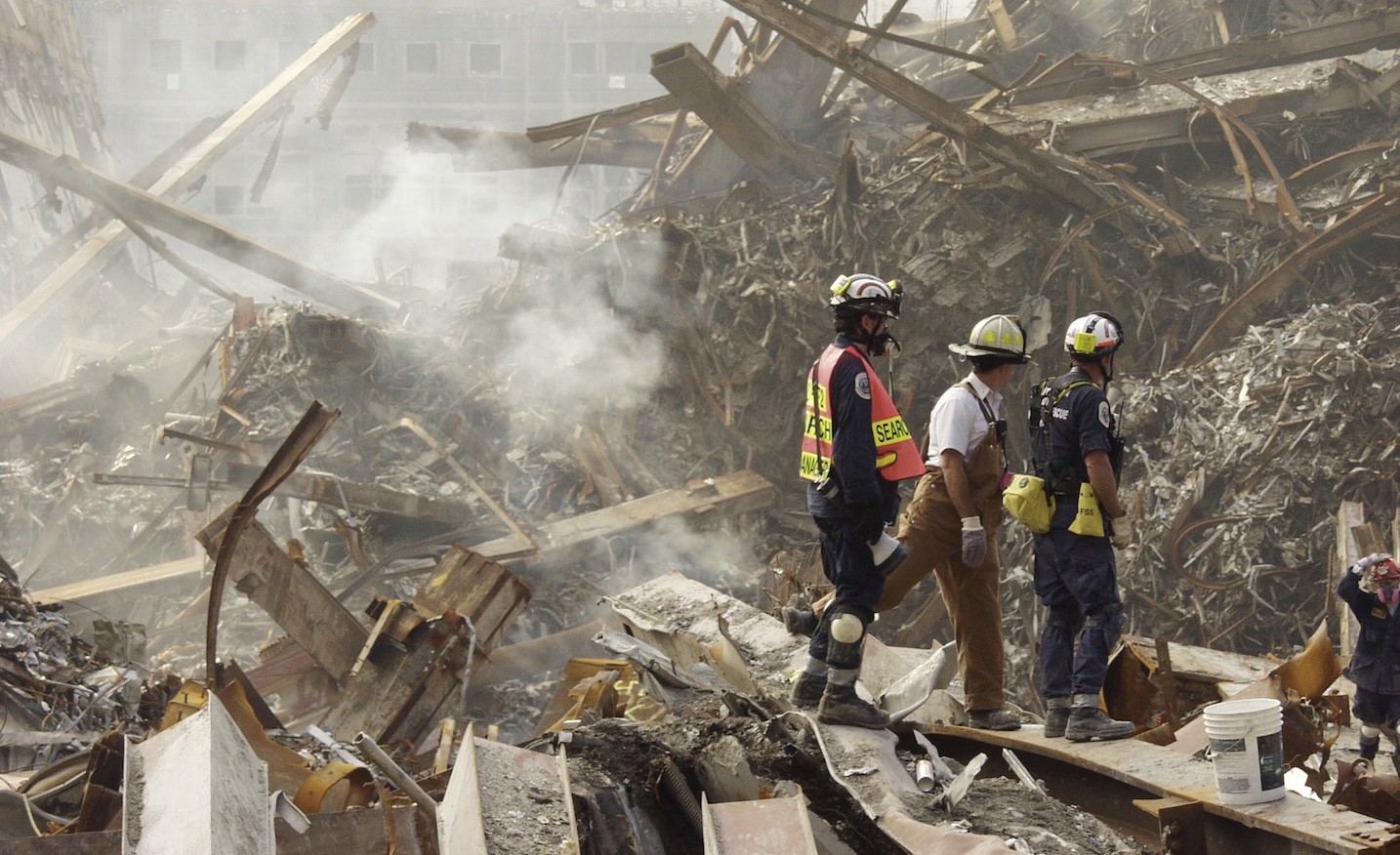letrec
New Member
Hi everyone,
As we all know jet fuel can't melt steel beams. Of course melting steel
beams is unnecessary to explain the collapse of WTC 1 or 2. But then
truthers will point to the various witness statements talking of "molten
steel" or "molten metal" in the WTC basements. This topic has been
discussed in this thread.
Various explanations has been provided. I think everyone agrees that there have
been long-burning fires in the WTC rubble. That being said, it is being also
agreed that uncontrolled hydrocarbon fires can hardly exceed 1300 K, the
melting point of steels being around 1600 K.
The WTC was full of metals having melting points below 1300 K and this includes
common metals like aluminum, zinc, lead. Therefore large quantities of these
metals may have melted because of the actions of the underground fires,
and these may have been reported by the witnesses inaccurately as being molten
steel, especially if glowing steel elements were dipping in pools of molten
aluminum.
Forum member Jazzy was suggesting that molten steel may have been produced as a
result of the kinetic energy of the collapsing towers being partially
transferred to some of the steel elements, causing them to melt. I had thought
of this (relatively obvious) possibility too and I found Jazzy's posts by
searching this forum. (There is also some material at JREF/IS but the
discussions there are lost in self-congratulatory noise.)
A quick estimate of the gravitational potential energy of the towers is 500-1000
GJ per tower. An enthalpy of fusion of 270 kJ/kg and a specific heat of 460
J/kg seems reasonable for steel. Starting from an ambient temperature of 300 K
one therefore needs 868 kJ/kg to melt steel, leaving it at the melting
temperature. Thus the maximum amount of steel that could conceivably be molten
by the gravitational potential energy of each tower would be 576 to 1152 tons.
Of course a portion of that energy will be expended in endothermic processes,
and a portion will be lost to the environment in the form of dust clouds, etc.
It is difficult to estimate what portion of that energy could perform work on
steel.
Also, energy would have to be concentrated on steel beams.
I would simply argue that to someone with a general scientific education it does
not seem implausible that a small percentage of the total available energy would
produce molten steel.
In other words, one could expect from basic arguments that from 10 to 30 tons of
molten steel would be produced in the collapse.
Note that the collapse duration was 15 to 25 seconds according to NIST; this
means that the power release was 20 to 67 GW. A small percentage of this would
be 0.2 to 2 GW. If this acts on 10 to 30 tons, it would take 4 to 130 seconds.
Now 10 to 30 tons is only 1.25 to 3.75 cubic meters. The characteristic
dimension (assuming a sphere) would be 0.7 to 1 meters, for a surface of
6.2 to 12.6 square meters.
The incoming power density would be something like 16 to 320 MW/m^2.
If the steel is at 1600 K, with the given surfaces, up to 2.3 to 4.7 MW could be
lost by radiative cooling. This is one to two orders of magnitude below the
incoming power density.
Therefore it is not implausible, based on energy and power density
considerations, that some limited amount of molten steel could be produced in
the collapse.
In my next post I will show the results of a simple spherical cooling
simulation that shows that molten steel could stay in a molten state for many
weeks.
As we all know jet fuel can't melt steel beams. Of course melting steel
beams is unnecessary to explain the collapse of WTC 1 or 2. But then
truthers will point to the various witness statements talking of "molten
steel" or "molten metal" in the WTC basements. This topic has been
discussed in this thread.
Various explanations has been provided. I think everyone agrees that there have
been long-burning fires in the WTC rubble. That being said, it is being also
agreed that uncontrolled hydrocarbon fires can hardly exceed 1300 K, the
melting point of steels being around 1600 K.
The WTC was full of metals having melting points below 1300 K and this includes
common metals like aluminum, zinc, lead. Therefore large quantities of these
metals may have melted because of the actions of the underground fires,
and these may have been reported by the witnesses inaccurately as being molten
steel, especially if glowing steel elements were dipping in pools of molten
aluminum.
Forum member Jazzy was suggesting that molten steel may have been produced as a
result of the kinetic energy of the collapsing towers being partially
transferred to some of the steel elements, causing them to melt. I had thought
of this (relatively obvious) possibility too and I found Jazzy's posts by
searching this forum. (There is also some material at JREF/IS but the
discussions there are lost in self-congratulatory noise.)
A quick estimate of the gravitational potential energy of the towers is 500-1000
GJ per tower. An enthalpy of fusion of 270 kJ/kg and a specific heat of 460
J/kg seems reasonable for steel. Starting from an ambient temperature of 300 K
one therefore needs 868 kJ/kg to melt steel, leaving it at the melting
temperature. Thus the maximum amount of steel that could conceivably be molten
by the gravitational potential energy of each tower would be 576 to 1152 tons.
Of course a portion of that energy will be expended in endothermic processes,
and a portion will be lost to the environment in the form of dust clouds, etc.
It is difficult to estimate what portion of that energy could perform work on
steel.
Also, energy would have to be concentrated on steel beams.
I would simply argue that to someone with a general scientific education it does
not seem implausible that a small percentage of the total available energy would
produce molten steel.
In other words, one could expect from basic arguments that from 10 to 30 tons of
molten steel would be produced in the collapse.
Note that the collapse duration was 15 to 25 seconds according to NIST; this
means that the power release was 20 to 67 GW. A small percentage of this would
be 0.2 to 2 GW. If this acts on 10 to 30 tons, it would take 4 to 130 seconds.
Now 10 to 30 tons is only 1.25 to 3.75 cubic meters. The characteristic
dimension (assuming a sphere) would be 0.7 to 1 meters, for a surface of
6.2 to 12.6 square meters.
The incoming power density would be something like 16 to 320 MW/m^2.
If the steel is at 1600 K, with the given surfaces, up to 2.3 to 4.7 MW could be
lost by radiative cooling. This is one to two orders of magnitude below the
incoming power density.
Therefore it is not implausible, based on energy and power density
considerations, that some limited amount of molten steel could be produced in
the collapse.
In my next post I will show the results of a simple spherical cooling
simulation that shows that molten steel could stay in a molten state for many
weeks.



